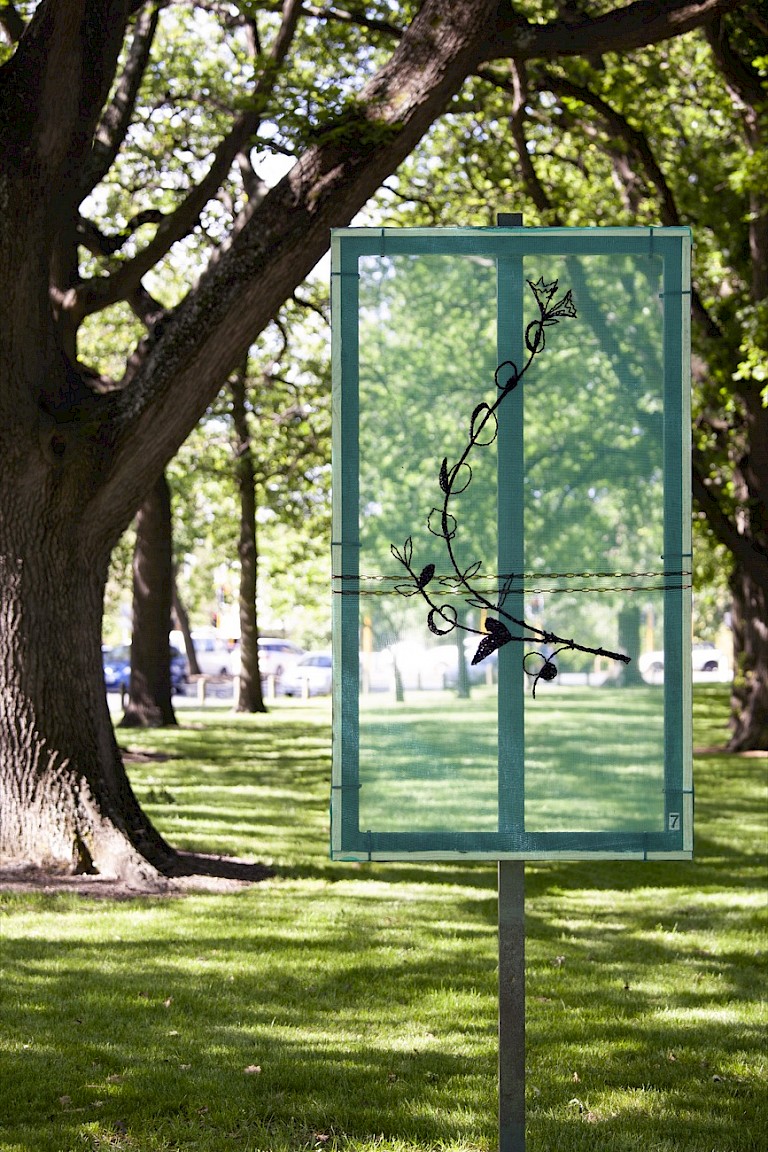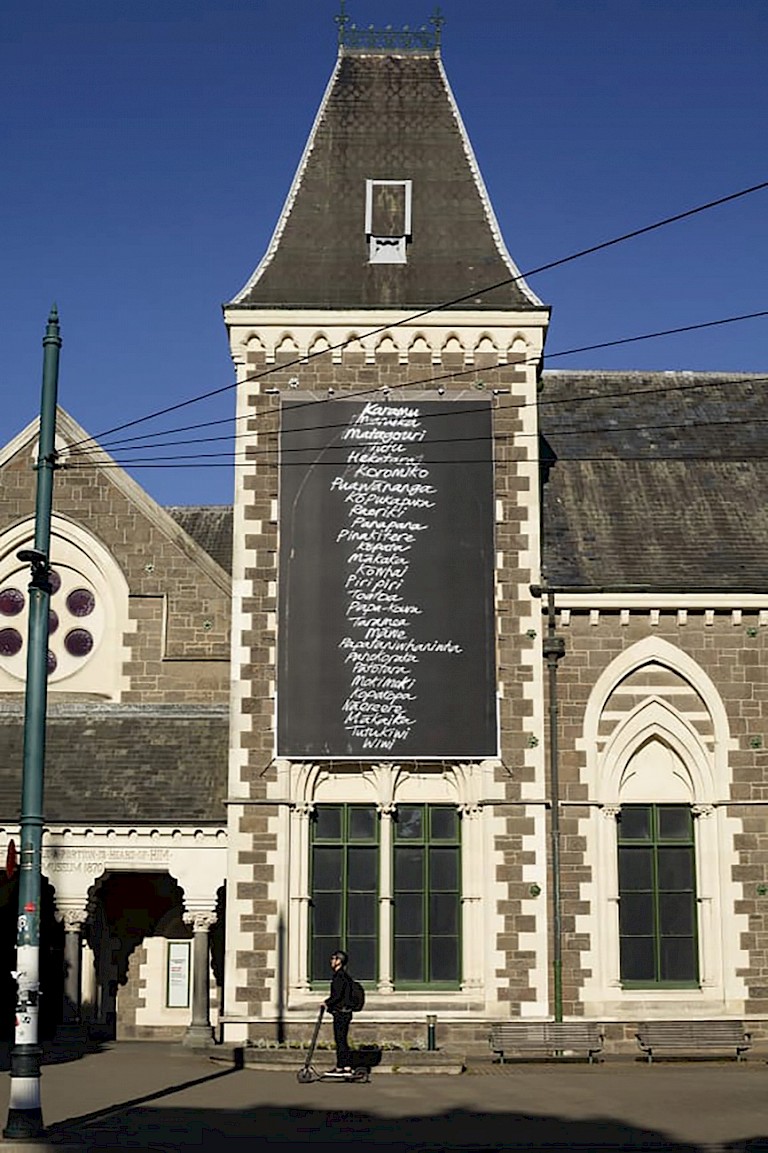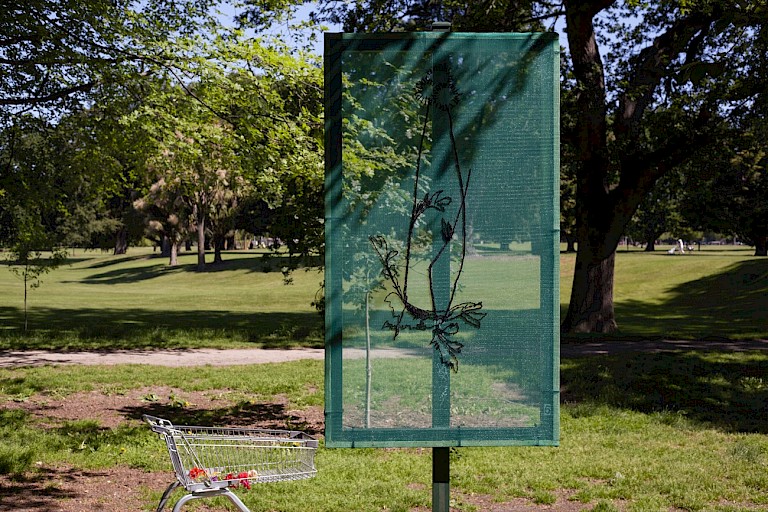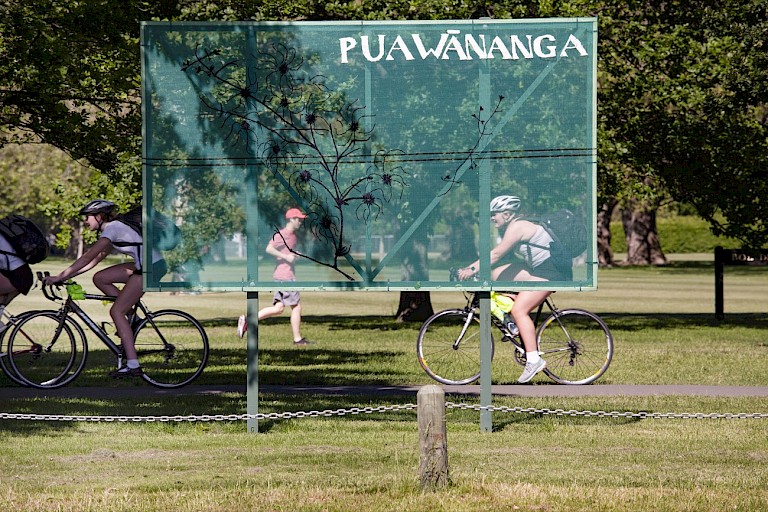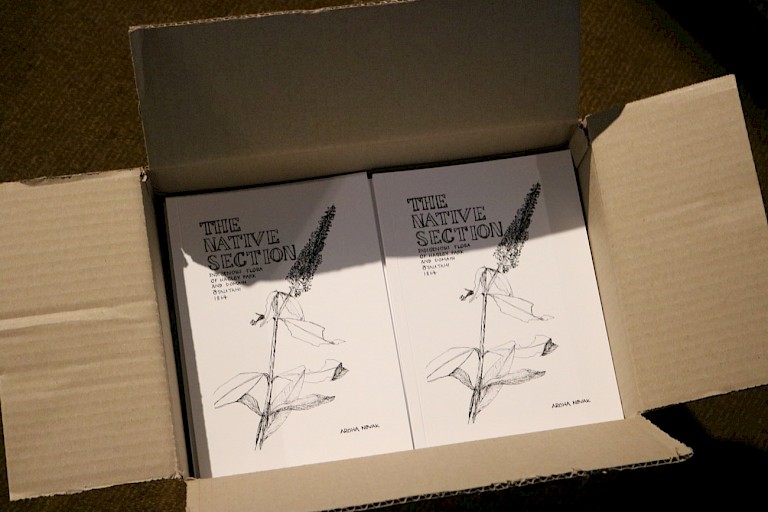



The Artist
Aroha Novak (Tūhoe, Ngati Kahungunu and Ngaiterangi) grew up in Ōtepoti / Dunedin, graduated from the Dunedin School of Art in 2007 with a Bachelor of Fine Arts and Master of Fine Arts with Distinction in 2013.
Living and working in Dunedin, Aotearoa–New Zealand, Novak’s work has focused on escapism, utopias and idealism within a capitalist, postcolonial and institutionalised society, frequently working outside of traditional gallery spaces and collaborating with other artists. Her work is often research and project based, drawing out indigenous and local histories that have been forgotten or suppressed, exploring social, political and economic inequality still prevalent in contemporary society. She has a deep interest in Māori language (Te Reo) and researching/highlighting forgotten histories/information about whenua (the land).Novak is a multidisciplinary artist, letting the concept dictate the materials used by employing a new approach to each project. She has exhibited in both solo and group exhibitions since 2008.
Lead by Managing Curator Jamie Hanton, the SCAPE Public Art event for 2021 approached Aroha Novak to create a project. Hanton had been familiar with Novak’s practice for over a decade. During Hanton’s tenure as Managing Curator at SCAPE there was an ongoing agreement with the Christchurch City Council to activate the billboard frames around North Hagley Park during each season, so thinking about artists whose work could translate to these quite fixed, but ultimately flexible, forms was part of the curatorial decision making. Hanton approached the artist on the basis of knowing an earlier project as well as her interest in urban art interventions and street art. A discussion between artist and curator ensued about this project and what the process might be for working in a similar way on a new, somewhat foreign site. Acknowledging and being sensitive to the stories and knowledge of mana whenua was of primary significance during the commissioning process. SCAPE had a pre-existing relationship with Matapopare, the organisation that represented Ngāi Tūāhuriri during the rebuild of Christchurch following the 2010-11 earthquake sequence, so they were able to rely on their expertise in this process. Novak’s project began large and actually grew further during the commissioning process. SCAPE was able to include an exhibition of the original plant specimens within Canterbury Museum, a publication of her botanical drawings, and a mammoth spray-painted list of all the plants first recorded in pre-colonial North Hagley on the front of the museum. Hanton comments that “These were all additional opportunities that Aroha, to her immense credit, grasped with both hands and executed beautifully.” The overarching theme for Hanton’s three seasons as Managing Curator at SCAPE was Fictions¸ which took storytelling as its fundamental concern. Novak was approached as Hanton wished to work with a range of artists from different backgrounds and disciplines who told great stories and who had the ability to re-present ‘established’ stories that related to sites people may not consider in their daily lives. “In addition to this consideration of site and story” Hanton recounts “I was guided by texture; of the overall materiality of the season. I wanted to ensure that a plurality of material and aesthetic approaches were included in each season that both worked with the environment but could also contradict the established narratives and the way they are told – for example permanent sculptures in robust / precious materials cf. temporal installations featuring more quotidian / DIY making processes”. The commissioning process was approximately nine months long. Hanton approached artists with an informal invitation and an explanation of the season’s theme at the beginning of 2021, the artists who accepted were then brought to Ōtautahi around Easter. During this visit they met the other artists and we spent two days talking about the commissioning process and also familiarising the artists with the city through discussion, walking tours, and a commissioning guide specific to SCAPE. Following this, the artists were asked to supply a proposal of the work they wanted to make. Upon acceptance of this, a detailed design process was entered into. As The Native Section was entirely handmade Aroha continued her research and making. As Aroha was located in Dunedin and travel was limited in 2021, the project team carried out some of the smaller ‘on the ground’ tasks for Aroha including meeting with the relevant institutions and securing the base material (building scrim) for the work.
Hagley Park is the city of Ōtautahi–Christchurch’s largest urban open space, a popular and well used park close to schools, Canterbury Museum, and the city centre Christchurch is often described as the most English of New Zealand cities, with its traditional churches, parks, and stone buildings created by early settlers, along with their values, defining much of the city pre the devastating 2011 earthquake. Set into this culture Aroha Novak’s art work takes on a special relevance. The Native Section – situated in a colonial-era park designed along English traditions – alerts its audience to a landscape changed and redefined with references from a dominant culture. A popular park that is part of the city’s consciousness is, in fact, a manufactured landscape and one that sought to obliterate all signs of native flora and traditional uses. Novak suggests her art work “questions institutional frameworks, ways of cataloguing and naming, whilst highlighting Te Ao Māori worldviews where the environment is paramount, looking at the past through a contemporary lens and remembering what was there before.” Her art work is a excellent example of how the subtle interventions of contemporary art can amplify and re-address absence and cultural rupture. The colonisation of Aotearoa affected both land and people, removing or hiding language and practices in a manner that continues to have ongoing repercussions. Intriguingly, Novak’s art work honours both indigenous and European systems of cataloguing and memory while returning language and image to the whenua (land) of Aotearoa–New Zealand. The Native Section continues her interest in recognising and highlighting pre-colonial histories, with the artist’s extensive research focussing on the 88 indigenous and endemic specimens removed from Hagley Park. Taking the two-dimensional forms of the pressed plants held in the collection of Manaaki Whenua — first gathered by J.B and J.F Armstrong at the end of the nineteenth century — and painstakingly translating and transplanting into embroidered images that literally cast shadows onto the whenua they originally occupied. Continuing the skilful use of juxtaposition in this work, Novak has combined the transparency of the scrim upon which the images are embroidered and the builders materials that form her panels/ billboards. Embroidery is a traditionally feminine art common to the time of colonisation, now employed to make a social political comment and reinstate both plants and the Te Reo Māori (language). Novak explains how there were “many tendrils of research that informed the outcomes of this project and seeing it in situ was a culmination of all of those threads being realised.”
